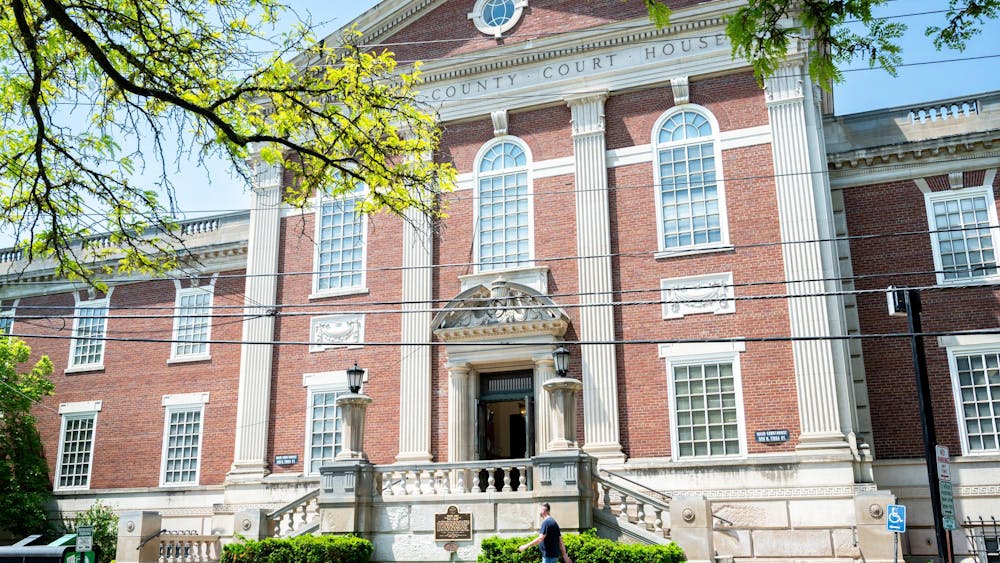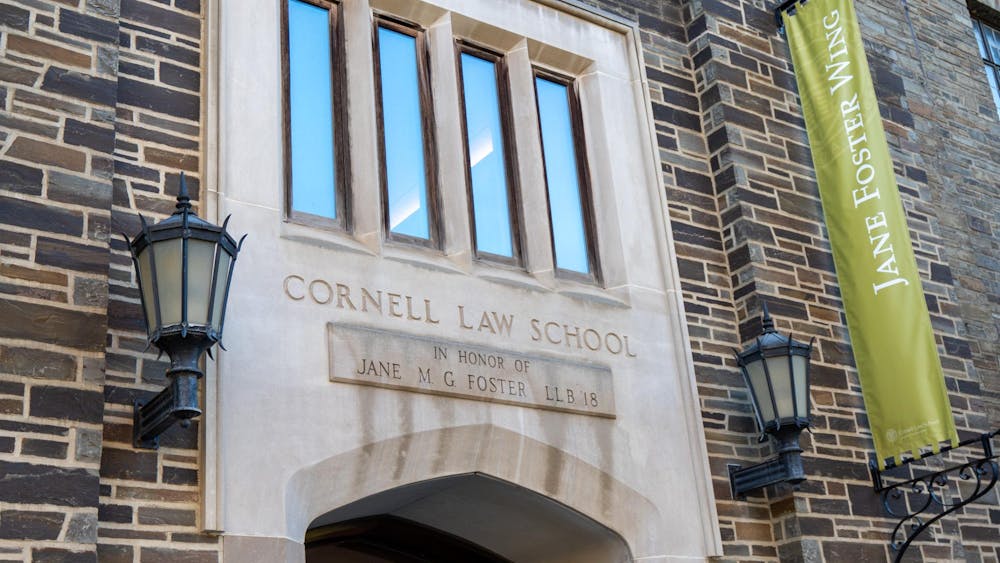Though Western Michigan was just crowned the national champion of a tumultuous college hockey season, men’s hockey hasn’t taken the ice for 18 days, and has already seen a handful of intriguing developments.
As the dust settles on what was a sprint to the end of a turbulent Cornell hockey season — the final one for Mike Schafer ’86 — there remain endless questions about how the 2024-2025 season unfolded, and how things might change for 2025-2026.
In my third and final mailbag of the season, I will do my best to answer — most of — your burning questions about the Cornell men’s hockey team.
Good or bad, what surprised you most about this Cornell hockey season?
The most surprising thing was not where Cornell ended up, but how it got there. Injuries inhibited the Red from playing consistent hockey from the start of the season, and the magnitude of the injuries was unlike anything I had ever seen. The team had to battle through impaired lineups and suspensions just to finish sixth in the ECAC.
A mere few weeks after Cornell solidified its No. 6 seed in the ECAC tournament, it was preparing for a regional final matchup against Boston University.
The Red had the potential to play as dominant as it did down the stretch all season, but ulterior misfortunes seeped into the locker room and created a rocky road into the NCAA Tournament. What is most surprising was not Cornell’s 4-3 victory over top-ranked Michigan State but how long it took to get to that point, and what the Red had to struggle through before things began to click.
What also surprised me immensely was the inconsistency of special teams. Though Cornell finished a middle-of-the-pack 42nd in power play percentage (18.2 percent) and 37th in penalty kill percentage (79 percent) in 2023-2024, the Red’s power play this past season never climbed out of the bottom-five in the country. Cornell finished at 14.7 percent, but often mingled around 10-11 percent throughout much of the regular season.
With strikers like junior forward Dalton Bancroft and sophomore forward Ryan Walsh, it was expected that Cornell’s power play might rise to the level it once was in 2022-2023, where the Red finished with the seventh-best man advantage in the country (24.6 percent).
The penalty kill struggled early — perhaps an inherent consequence of losing former associate head coach Ben Syer over the 2024 offseason — but ultimately regained its footing and finished at 14th in the country (82.7 percent).
Late-season heroics — like senior defenseman Tim Rego’s overtime winner against Quinnipiac in the ECAC semifinals, a night Cornell scored twice on the power play, and senior forward Sullivan Mack’s last-second game-winner against Michigan State — might have partially satisfied some fans’ dissatisfaction with the power play all year. But in order for Cornell to contend next season, a year set to be riddled with question marks, the numbers must improve.
Way too early line projections for next season?
Like you said — it’s way too early. Next year’s recruiting class has not been rounded out yet. Elite Prospects and Neutral Zone both list Cornell as having 12 incoming freshmen next season, but that number could change depending on how active head coach Casey Jones ’90 is in the transfer portal. I’d anticipate the incoming class being around 10-12 players deep to account for losses.
With placeholders for the departing players, here’s an idea of where the Cornell lineup stands right now based on the starting lineup from this past season.
LW – Walsh – RW
LW – C – DeSantis
LW – Castagna – Major
Kraft – Catalano – RW
LD – RD
LD – Stanley
LD – Fegaras
G
Keopple
Katz
Now, I’ll fill in with some of the healthy scratches and injured players that should return next season, plus a little shaking up of the top-six.
Kraft – Walsh – Major
LW – Castagna – DeSantis
LW – Devlin – RW
Donaldson – Catalano – Wallace
Fisher – Stanley
LD – Fegaras
O’Brien – Wolfenberg
Keopple
Katz
The forward lines are definitely subject to change. I could see Kraft potentially skating on a line with DeSantis to maximize speed. The same could be said about Devlin being paired with Wallace to account for physicality. Devlin has also played on the left wing at times, but is listed as a center and could be asked to account for the loss of depth at the 'C'.
I slotted junior defenseman Jack O’Brien in with freshman defenseman Nicholas Wolfenberg, as I’d expect he’ll contend for a spot in the starting defensive pairings with the departure of four key defensemen. I also added incoming sophomore transfer Michael Fisher, who is a defenseman that played for Northeastern in 2023-2024 and in the British Columbia Hockey League this past season. He is listed as having a right-handed shot but has played on the left side with the Penticton Vees this past season.
That leaves two extra returning players — sophomore defenseman Marian Mosko and freshman forward Parker Murray — that I expect will compete with incoming freshmen for lineup spots. Of course, any of the incoming players could overtake current starters for roster spots. When you account for injuries, the departures don’t look quite as costly.
The biggest loss comes between the pipes.
Who is supposed to be the No. 1 goalie next year?
Junior goaltender Remington Keopple should undoubtedly be given a look for the starter’s crease for his senior year. In his brief appearances throughout his tenure, Keopple has shined — no brighter than on March 1, where Keopple secured a 21-save shutout after earning a start in Cornell’s final regular season game. Senior goaltender Ian Shane was then given the nod for the playoffs and won six of his final seven games.
The coaching staff made the tough decision to go with Shane over Keopple in the playoff, presumably due to his experience. Keopple should earn that experience next season, but it’s anyone’s fight for a spot between the pipes.
Also returning is freshman goaltender Justin Katz, who battled injury throughout his first season and did not dress for the Red’s final nine games. Katz is an intriguing prospect who, notably, catches with his right glove instead of the standard left for most goaltenders, but has struggled to stay healthy over the last few years.
Arriving in Ithaca this fall will be Erick Roest, a 2004-born goaltender who hails from Lethbridge, Alberta. Roest has split time between the United States Hockey League and the BCHL, posting a .878 and .857 save percentage in 23 and seven games, respectively.
The three goaltenders should duel for the starting position, and all three should get playing time in Cornell’s anticipated exhibition matches. Unless Roest or Katz shine, I’d expect it to be Keopple…
… However, I’d be interested to see if Jones utilizes the transfer portal for this position. In his last two years at Clarkson, Jones twice turned to the portal to find his starting goaltender. Before leaving Clarkson for Cornell, Jones recruited Lake Superior State’s Ethan Langenegger for the 2024-2025 season, who went on to win ECAC Goaltender of the Year. In 2023-2024, Jones brought in Providence College product Austin Roden.
Obviously, Jones faces more constraints, as graduate students are not eligible to play in the Ivy League. But past behavior might indicate an interest in dipping into the portal for a potential starting goaltender — carrying four goaltenders is a tall task, but as Katz did not dress for much of the season, the small difference would be felt most at practice.
Is [Jones] going to try to use the transfer portal more?
On a similar note, I think yes. He’s already picked up Fisher as a much-needed piece for the depleted defensive corps, and I wouldn’t be surprised if he tried to recruit in the Canadian Hockey League after last year’s rule-change that allows major-junior players to play in the NCAA.
The transfer portal is difficult to utilize as an Ivy League coach — there are so many academic constraints that accompany transferring into the Ivy League, as the standard is that much higher. Additionally, the lack of Name, Image and Likeness money coupled with the prohibition of athletic scholarships also limit the wiggle-room for Ivy League coaches to cash in on the luscious market of transfers.
Do you expect any more transfers out?
Re: Sophomore Defenseman Ben Robertson Transfers to Michigan
I don’t expect any other players to transfer out, based on what I’ve heard from around the program. With Robertson’s commitment to Michigan, as well as the status of the other two initially rumored destinations for Robertson — Notre Dame and Denver — it is clear that he was highly sought after by some of college hockey’s top programs.
Originally reported by Mark Divver and subsequently confirmed to The Sun, Robertson is expected to attend Boston Bruins development camp this summer. Last summer, he attended Winnipeg Jets development camp as a non-roster invite. After going undrafted, a player like Robertson is looking to maximize his outreach to NHL teams.
Transfers in many cases are situational and unique, despite Cornell’s coaching change. In short, I don’t expect others to transfer out.
Leading goal scorer next season?
I’ll take my pick now: Walsh. He led the way in 2024-2025 with 17 goals and 31 points.
Close seconds: sophomore forward Jonathan Castagna and freshman forward Charlie Major.
For the latest offseason updates on the men’s hockey team, follow senior editor and men’s hockey beat reporter Jane McNally @janemcnally_.
Jane McNally is a senior editor on the 143rd editorial board and was the sports editor on the 142nd editorial board. She is a member of the Class of 2026 in the College of Agriculture and Life Sciences. You can follow her on X @JaneMcNally_ and reach her at jmcnally@cornellsun.com.











